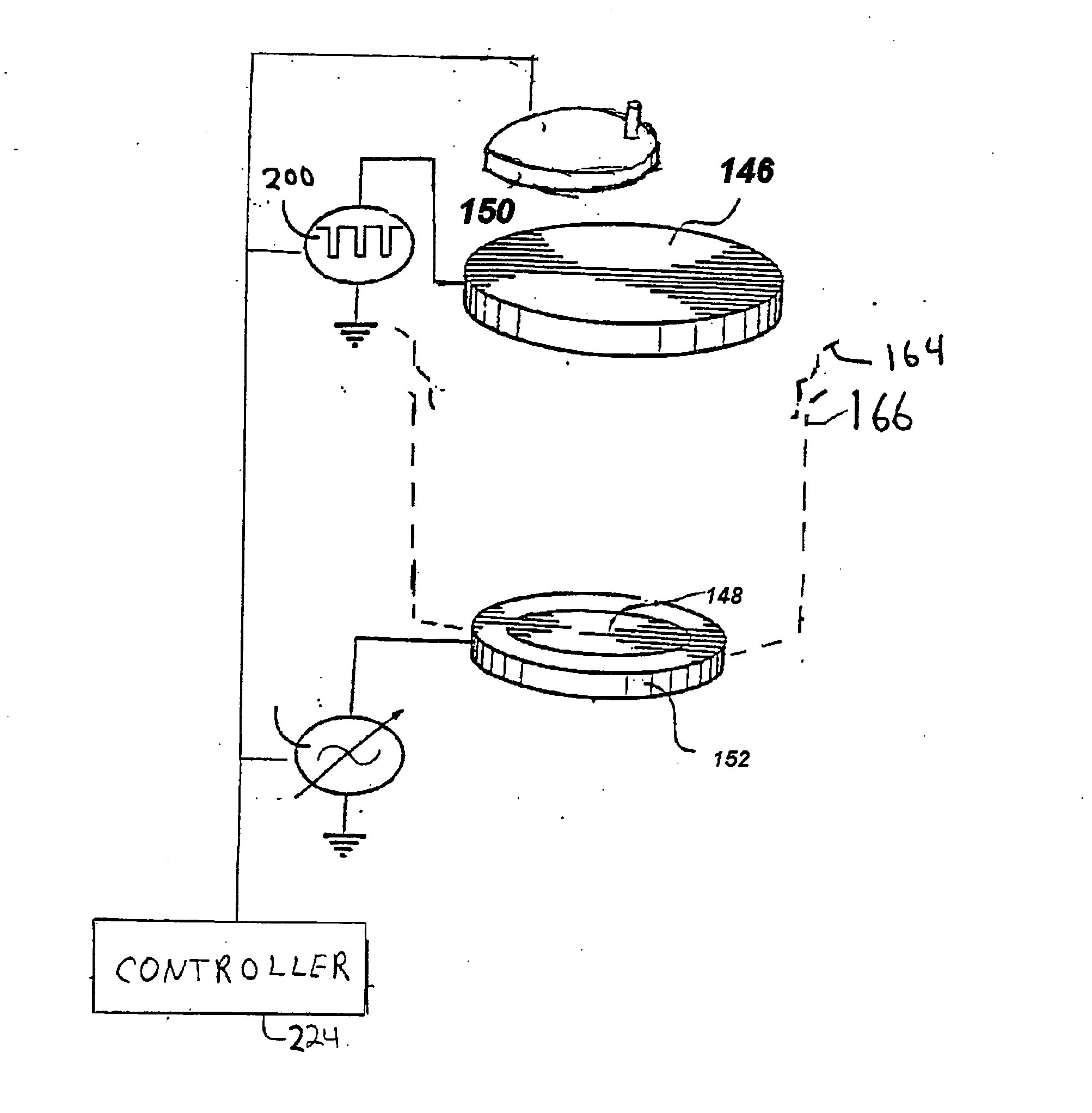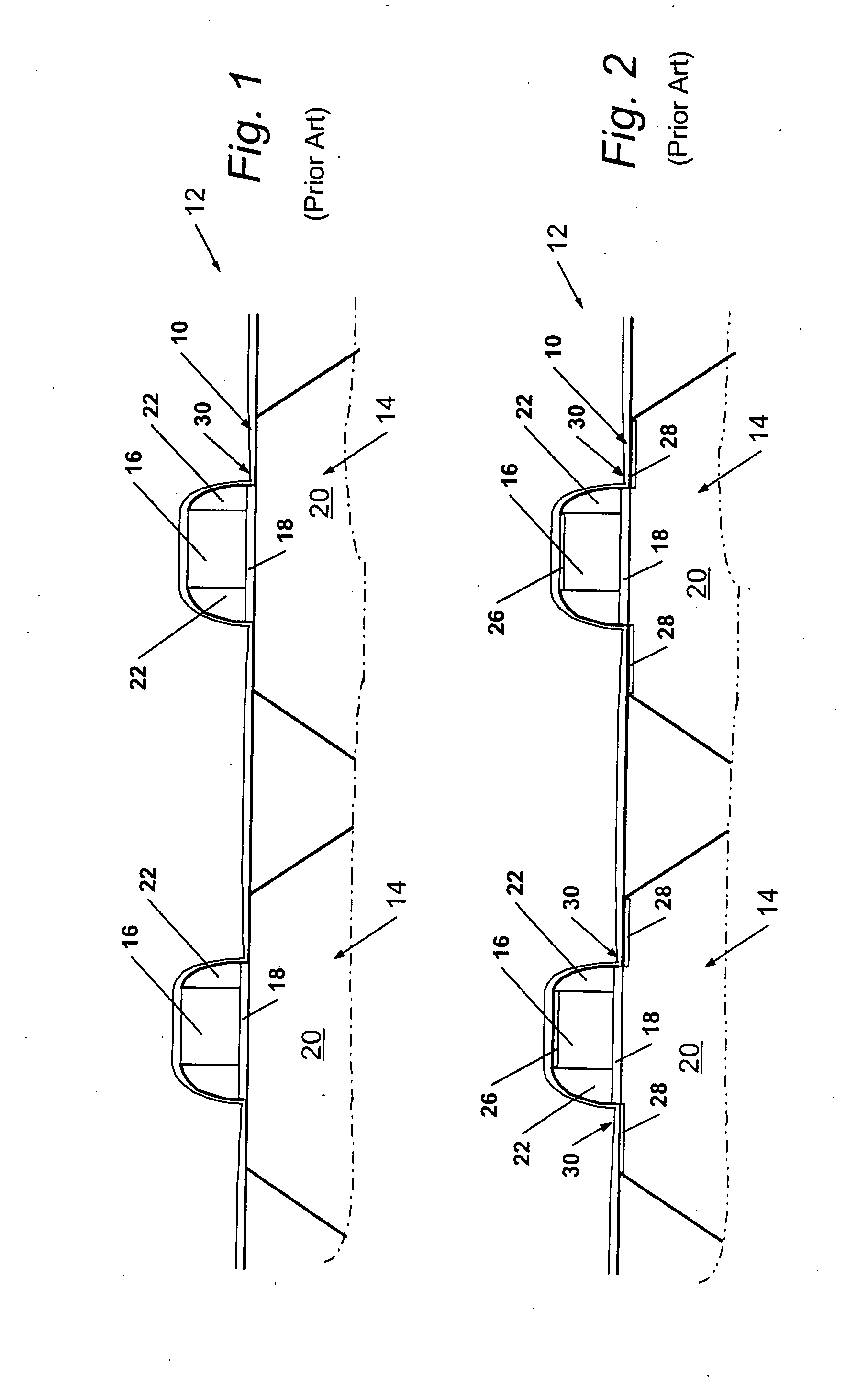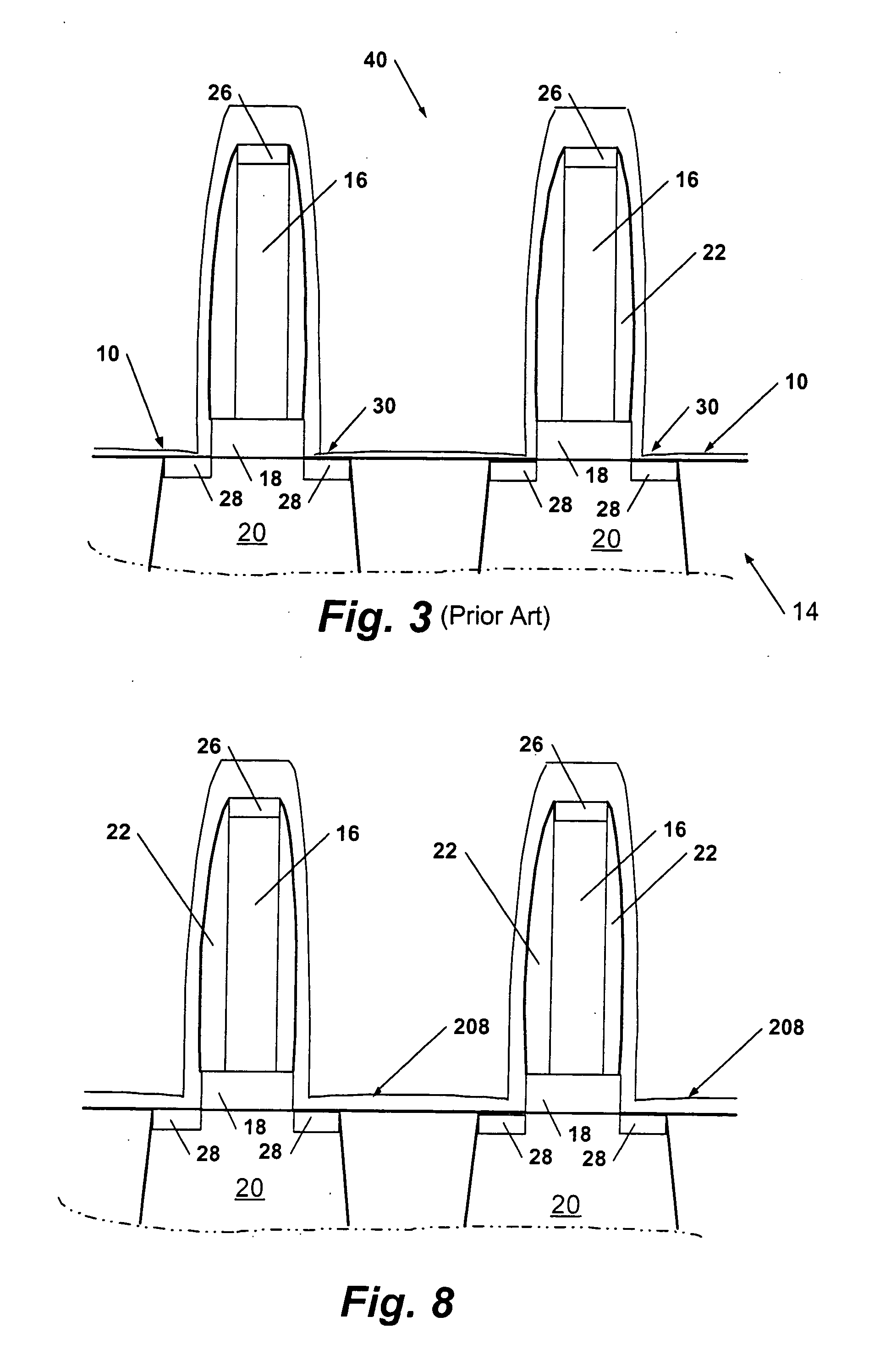Pulsed magnetron for sputter deposition
a sputter and magnetron technology, applied in the field of sputtering, can solve the problems of adversely affecting the formation of the underlying silicide, difficult to achieve thin films with a desired degree of uniformity, and the relative height of the vertical structure is growing increasingly tall
- Summary
- Abstract
- Description
- Claims
- Application Information
AI Technical Summary
Benefits of technology
Problems solved by technology
Method used
Image
Examples
Embodiment Construction
[0019] One embodiment of the present inventions is directed to sputter depositing a metal layer by biasing a sputter target with pulsed power in which the power applied to the target alternates between low and high levels. The high levels are, in one embodiment, sufficiently high to maintain a plasma for ionizing deposition material. The low levels are, in one embodiment, sufficiently low such that the power applied to the target during the high and low levels is, on average, low enough to facilitate deposition of thin layers if desired.
[0020] In the illustrated embodiment, the power applied to bias the target is modulated in a plurality of alternating first and second intervals wherein in each of the first intervals, the power level is at a first level sufficiently high to attract ions to sputter the target. In each of the second intervals, the power is applied at a second level higher than the first level and sufficiently high not only to sputter the target but also to maintain a...
PUM
| Property | Measurement | Unit |
|---|---|---|
| Fraction | aaaaa | aaaaa |
| Frequency | aaaaa | aaaaa |
| Frequency | aaaaa | aaaaa |
Abstract
Description
Claims
Application Information
 Login to View More
Login to View More - R&D
- Intellectual Property
- Life Sciences
- Materials
- Tech Scout
- Unparalleled Data Quality
- Higher Quality Content
- 60% Fewer Hallucinations
Browse by: Latest US Patents, China's latest patents, Technical Efficacy Thesaurus, Application Domain, Technology Topic, Popular Technical Reports.
© 2025 PatSnap. All rights reserved.Legal|Privacy policy|Modern Slavery Act Transparency Statement|Sitemap|About US| Contact US: help@patsnap.com



